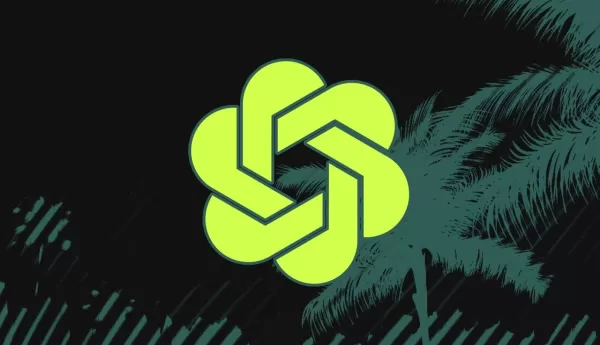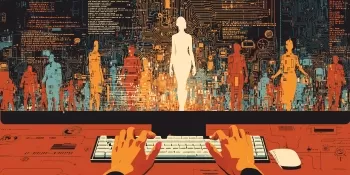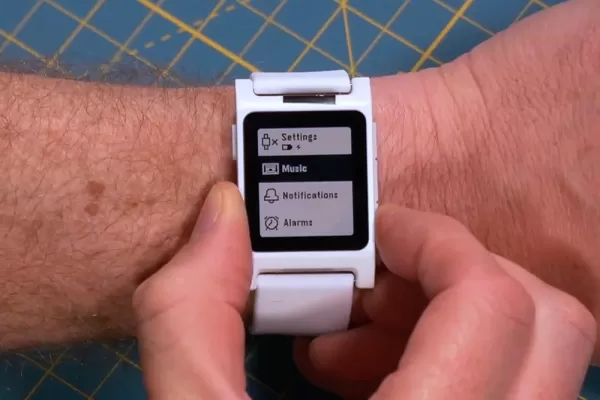Win $250K from OpenAI by Solving Archaeological Mysteries with AI

The Amazon Rainforest: More Than Just Nature
The Amazon Rainforest is nothing short of awe-inspiring—a sprawling, six-million-square-kilometer ecosystem teeming with life. For centuries, it has been woven into the heart of countless indigenous origin stories and traditions, each carrying wisdom passed down over millennia. Yet, despite its undeniable significance, it has often been overlooked by mainstream archaeology. The conventional belief was that such a wild, untamed expanse couldn’t possibly hold any major clues about humanity’s cultural evolution. But guess what? That’s all starting to change.
Recent archaeological breakthroughs are turning traditional assumptions upside down, proving something indigenous communities have always known: the Amazon wasn’t just a dense jungle—it was once home to thriving civilizations. These discoveries owe much to cutting-edge tech like satellite imagery and LiDAR, which have opened new doors to understanding this ancient world. And now, OpenAI is stepping in with a bold initiative—adding AI to the mix.
A New Kind of Treasure Hunt
Last week, OpenAI launched a global competition designed to uncover hidden archaeological sites in the Amazon using advanced AI tools like o3/o4 mini and GPT-4.1. Think of it as a digital treasure hunt where participants armed with Wi-Fi connections and curiosity sift through mountains of open-source data—everything from colonial diaries and indigenous oral histories to satellite photos and scientific studies—to track down legendary cities like the Lost City of Z and El Dorado.
“For the very first time,” OpenAI declared in a blog post introducing the event (dubbed the OpenAI to Z Challenge), “anyone with internet access can engage in serious archaeological research.” They argue that AI is giving humanity the ability to piece together the past of millions of people who once lived, fought, and flourished here.
How It Works
The competition comes with a handy set of optional checkpoints, acting almost like milestones along the path to discovery. Teams must navigate these hurdles before submitting their final findings by midnight EST on June 29. Submissions will be judged based on their impact, creativity, and whether others can replicate the results.
Winning Big
After an initial evaluation, the top five teams will present their work live alongside experts and OpenAI staff, including an enigmatic “mystery AI leader.” A panel will then decide on the winner through a vote. The victorious team will earn funding to keep exploring and even get the chance to collaborate with local archaeologists in the Amazon (subject to approval).
As for prizes, the top three finishers walk away with impressive payouts: $250,000 for first place, $100,000 for second, and $50,000 for third. To learn more and sign up, head over to the official website.
Why Does This Matter?
This isn’t just about finding lost cities; it’s about rewriting history. By leveraging technology and crowdsourcing efforts, we’re uncovering layers of human achievement that were once buried beneath the dense canopy. Who knows what secrets still lie hidden? One thing’s for sure—the future of archaeology just got a whole lot smarter—and more exciting.
Related article
 Manus Debuts 'Wide Research' AI Tool with 100+ Agents for Web Scraping
Chinese AI innovator Manus, which previously gained attention for its pioneering multi-agent orchestration platform catering to both consumers and professional users, has unveiled a groundbreaking application of its technology that challenges convent
Manus Debuts 'Wide Research' AI Tool with 100+ Agents for Web Scraping
Chinese AI innovator Manus, which previously gained attention for its pioneering multi-agent orchestration platform catering to both consumers and professional users, has unveiled a groundbreaking application of its technology that challenges convent
 Why LLMs Ignore Instructions & How to Fix It Effectively
Understanding Why Large Language Models Skip Instructions
Large Language Models (LLMs) have transformed how we interact with AI, enabling advanced applications ranging from conversational interfaces to automated content generation and programming ass
Why LLMs Ignore Instructions & How to Fix It Effectively
Understanding Why Large Language Models Skip Instructions
Large Language Models (LLMs) have transformed how we interact with AI, enabling advanced applications ranging from conversational interfaces to automated content generation and programming ass
 Pebble Reclaims Its Original Brand Name After Legal Battle
The Return of Pebble: Name and AllPebble enthusiasts can rejoice - the beloved smartwatch brand isn't just making a comeback, it's reclaiming its iconic name. "We've successfully regained the Pebble trademark, which honestly surprised me with how smo
Comments (2)
0/200
Pebble Reclaims Its Original Brand Name After Legal Battle
The Return of Pebble: Name and AllPebble enthusiasts can rejoice - the beloved smartwatch brand isn't just making a comeback, it's reclaiming its iconic name. "We've successfully regained the Pebble trademark, which honestly surprised me with how smo
Comments (2)
0/200
![BrianRoberts]() BrianRoberts
BrianRoberts
 August 26, 2025 at 1:00:59 AM EDT
August 26, 2025 at 1:00:59 AM EDT
Whoa, using AI to dig into ancient Amazon secrets? That’s wild! Imagine cracking 250K while unraveling mysteries older than my grandma’s recipes. Count me in! 🦜


 0
0
![EricPerez]() EricPerez
EricPerez
 July 23, 2025 at 12:59:29 AM EDT
July 23, 2025 at 12:59:29 AM EDT
This AI archaeology challenge sounds wild! $250K to uncover ancient secrets in the Amazon? Count me in—imagine AI decoding myths like a cosmic librarian. Hope it respects indigenous wisdom, though! 🌿🔍


 0
0

The Amazon Rainforest: More Than Just Nature
The Amazon Rainforest is nothing short of awe-inspiring—a sprawling, six-million-square-kilometer ecosystem teeming with life. For centuries, it has been woven into the heart of countless indigenous origin stories and traditions, each carrying wisdom passed down over millennia. Yet, despite its undeniable significance, it has often been overlooked by mainstream archaeology. The conventional belief was that such a wild, untamed expanse couldn’t possibly hold any major clues about humanity’s cultural evolution. But guess what? That’s all starting to change.
Recent archaeological breakthroughs are turning traditional assumptions upside down, proving something indigenous communities have always known: the Amazon wasn’t just a dense jungle—it was once home to thriving civilizations. These discoveries owe much to cutting-edge tech like satellite imagery and LiDAR, which have opened new doors to understanding this ancient world. And now, OpenAI is stepping in with a bold initiative—adding AI to the mix.
A New Kind of Treasure Hunt
Last week, OpenAI launched a global competition designed to uncover hidden archaeological sites in the Amazon using advanced AI tools like o3/o4 mini and GPT-4.1. Think of it as a digital treasure hunt where participants armed with Wi-Fi connections and curiosity sift through mountains of open-source data—everything from colonial diaries and indigenous oral histories to satellite photos and scientific studies—to track down legendary cities like the Lost City of Z and El Dorado.
“For the very first time,” OpenAI declared in a blog post introducing the event (dubbed the OpenAI to Z Challenge), “anyone with internet access can engage in serious archaeological research.” They argue that AI is giving humanity the ability to piece together the past of millions of people who once lived, fought, and flourished here.
How It Works
The competition comes with a handy set of optional checkpoints, acting almost like milestones along the path to discovery. Teams must navigate these hurdles before submitting their final findings by midnight EST on June 29. Submissions will be judged based on their impact, creativity, and whether others can replicate the results.
Winning Big
After an initial evaluation, the top five teams will present their work live alongside experts and OpenAI staff, including an enigmatic “mystery AI leader.” A panel will then decide on the winner through a vote. The victorious team will earn funding to keep exploring and even get the chance to collaborate with local archaeologists in the Amazon (subject to approval).
As for prizes, the top three finishers walk away with impressive payouts: $250,000 for first place, $100,000 for second, and $50,000 for third. To learn more and sign up, head over to the official website.
Why Does This Matter?
This isn’t just about finding lost cities; it’s about rewriting history. By leveraging technology and crowdsourcing efforts, we’re uncovering layers of human achievement that were once buried beneath the dense canopy. Who knows what secrets still lie hidden? One thing’s for sure—the future of archaeology just got a whole lot smarter—and more exciting.
 Manus Debuts 'Wide Research' AI Tool with 100+ Agents for Web Scraping
Chinese AI innovator Manus, which previously gained attention for its pioneering multi-agent orchestration platform catering to both consumers and professional users, has unveiled a groundbreaking application of its technology that challenges convent
Manus Debuts 'Wide Research' AI Tool with 100+ Agents for Web Scraping
Chinese AI innovator Manus, which previously gained attention for its pioneering multi-agent orchestration platform catering to both consumers and professional users, has unveiled a groundbreaking application of its technology that challenges convent
 Why LLMs Ignore Instructions & How to Fix It Effectively
Understanding Why Large Language Models Skip Instructions
Large Language Models (LLMs) have transformed how we interact with AI, enabling advanced applications ranging from conversational interfaces to automated content generation and programming ass
Why LLMs Ignore Instructions & How to Fix It Effectively
Understanding Why Large Language Models Skip Instructions
Large Language Models (LLMs) have transformed how we interact with AI, enabling advanced applications ranging from conversational interfaces to automated content generation and programming ass
 Pebble Reclaims Its Original Brand Name After Legal Battle
The Return of Pebble: Name and AllPebble enthusiasts can rejoice - the beloved smartwatch brand isn't just making a comeback, it's reclaiming its iconic name. "We've successfully regained the Pebble trademark, which honestly surprised me with how smo
Pebble Reclaims Its Original Brand Name After Legal Battle
The Return of Pebble: Name and AllPebble enthusiasts can rejoice - the beloved smartwatch brand isn't just making a comeback, it's reclaiming its iconic name. "We've successfully regained the Pebble trademark, which honestly surprised me with how smo
 August 26, 2025 at 1:00:59 AM EDT
August 26, 2025 at 1:00:59 AM EDT
Whoa, using AI to dig into ancient Amazon secrets? That’s wild! Imagine cracking 250K while unraveling mysteries older than my grandma’s recipes. Count me in! 🦜


 0
0
 July 23, 2025 at 12:59:29 AM EDT
July 23, 2025 at 12:59:29 AM EDT
This AI archaeology challenge sounds wild! $250K to uncover ancient secrets in the Amazon? Count me in—imagine AI decoding myths like a cosmic librarian. Hope it respects indigenous wisdom, though! 🌿🔍


 0
0





























